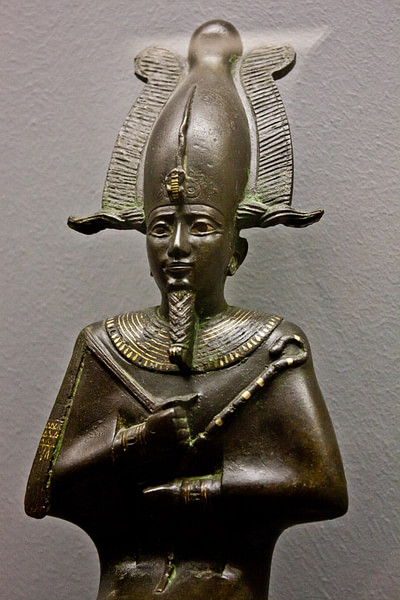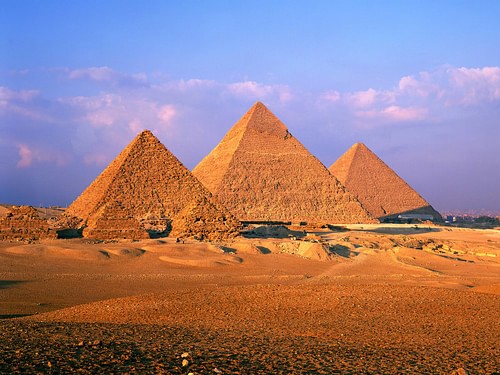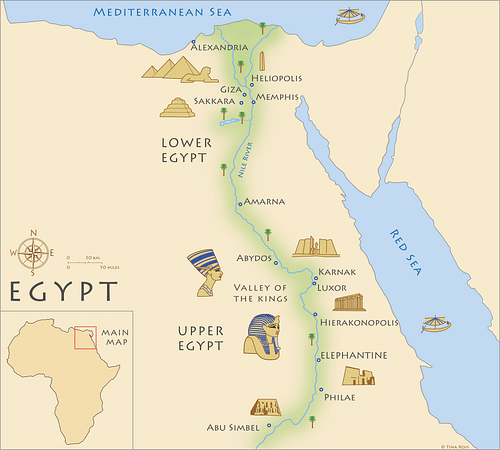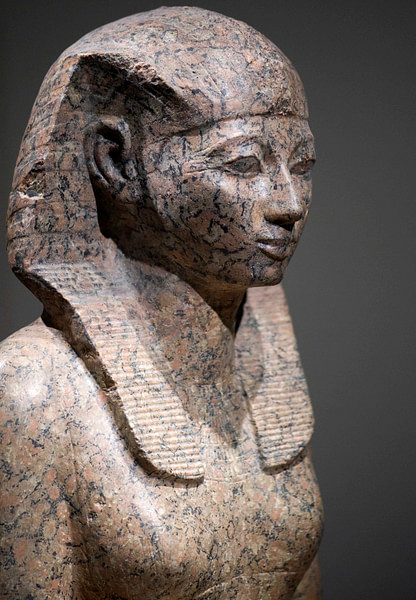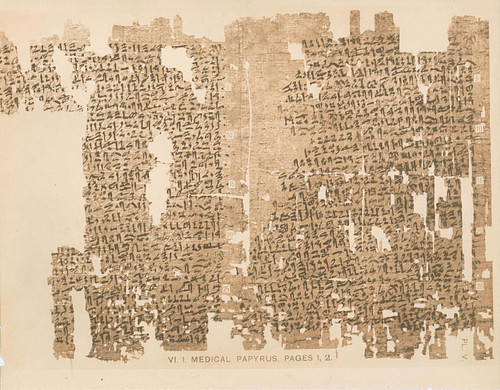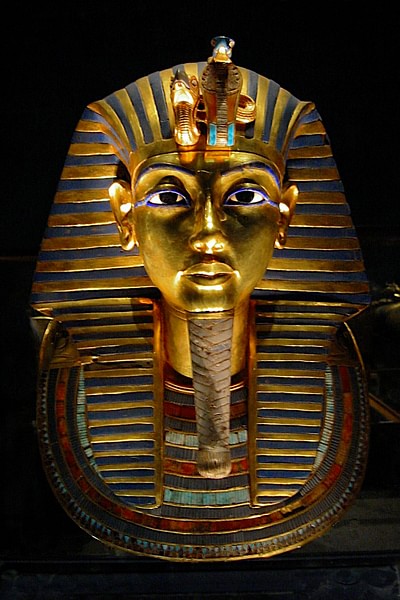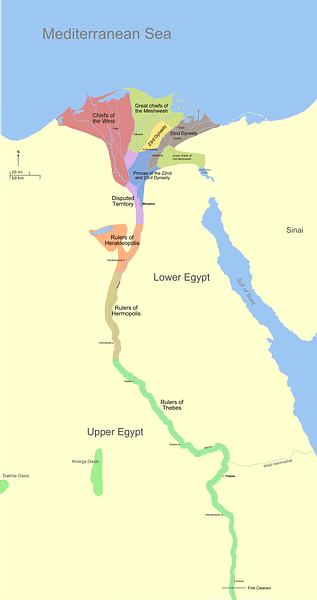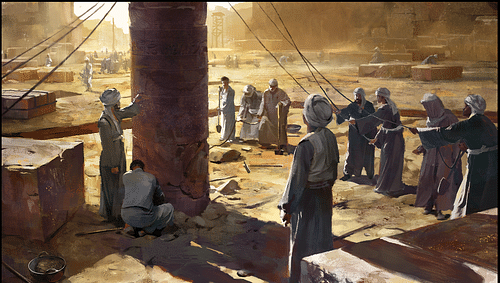В этой статье предлагаем вам небольшой рассказ про Египет на английском языке с параллельным переводом на русский. Подобные рассказы о России и Великобритании вы можете найти в статье «Рассказ о стране на английском».
Egypt — рассказ на английском |
Египет — перевод на русский |
| Egypt is officially known as the Arab Republic of Egypt. It is one of the hottest and sunniest countries in the world. Egypt is also known as one of the oldest civilizations in the world and the best country for tourism. It is proved that the Ancient Egyptians lived there as far back as 3150 BC. | Египет официально известен как Арабская Республика Египет. Это одна из самых жарких и солнечных стран в мире. Египет также известен как одна из старейших в мире цивилизаций и лучшая страна для туризма. Доказано, что Древние египтяне жили там еще в 3150 г. до н.э. |
| There is the Pyramid of Khufu — the largest Egyptian pyramid, one of the Seven Wonders of the Ancient World, which still exists. The Nile River runs through Egypt from south to north. It is one of the two largest rivers in the world.
Due to the Nile, Egypt was one of the first places in the world where it was possible to cultivate the land and settle. |
Здесь есть Пирамида Хеопса (Хуфу) — самая большая египетская пирамида, одно из семи чудес Древнего Мира, которое все еще существует. Река Нил проходит через Египет с юга на север. Это одна из двух крупнейших рек в мире.
Благодаря Нилу Египет был одним из первых мест в мире, где можно было обрабатывать землю и поселяться. |
Egypt today |
Египет в наши дни |
| Today, most people in Egypt still live along the Nile River because most of the country is occupied by the Sahara desert and Libyan Desert. Egypt owns one of the largest artificial canals — the Suez Canal, which connects the Mediterranean and Red Seas and provides a passageway for ships traveling from Europe to Asia and India. |
Сегодня большинство людей в Египте все еще живут вдоль реки Нил, потому что большая часть страны занята пустынями Сахара и Ливийской. Египет владеет одним из крупнейших искусственных каналов — Суэцким каналом, который соединяет Средиземное и Красное моря и обеспечивает проход для кораблей, следующих из Европы в Азию и Индию. |
| Many people in Egypt are farmers. They grow cotton, fruits, vegetables, as well as rice and wheat. Most people in Egypt are Arab Muslims. | Многие люди в Египте являются фермерами. Они выращивают хлопок, фрукты, овощи, а также рис и пшеницу. Большинство людей в Египте — арабские мусульмане. |
The capital of Egypt is Cairo. |
Столица Египта — Каир. |
| It is a very old and crowded city with a population of 9.5 million. Other major cities in Egypt are Alexandria and Giza. Many Egyptians are working abroad, mainly in Saudi Arabia and the Gulf countries. | Это очень старый и переполненный город с населением 9,5 миллионов человек. Другие крупные города Египта — это Александрия и Гиза. Многие египтяне работают за границей, главным образом в Саудовской Аравии и странах Персидского залива. |
| The official language of Egypt is Arabic, but others languages such as English and French are also understood by many. | Официальный язык Египта — арабский, но другие языки, такие как английский и французский, также понимаются многими. |
Представлено сочинение на английском языке Древний Египет/ Ancient Egypt с переводом на русский язык.
|
На английском |
Перевод на русский |
| Ancient Egypt | Древний Египет |
| Egypt is full of mysteries. This country was home to one of the most ancient civilizations in the world. Today we associate this North African country with giant pyramids, temples and tombs of pharaohs. | Египет полон загадок. Эта страна приютила одну из древнейших цивилизаций в мире. Сегодня мы связываем эту североафриканскую страну с гигантскими пирамидами, храмами и гробницами фараонов. |
| Historians discovered that the ancient nation living around the River Nile existed more than 5,000 years ago and lasted for over 2,000 years. This mighty civilization was known to have triumph and glory. | Историки обнаружили, что древний народ, живший у Нила, существовал более 5000 лет назад и прожил там более 2000 лет. Известно, что этой могучей цивилизации сопутствовали триумф и слава. |
| The center of life was concentrated around the Nile. First of all, people used this river as the main transportation route. Secondly, its annual floods made it possible to grow crops. | Центр жизни был сосредоточен вокруг Нила. Прежде всего, люди использовали эту реку в качестве основного маршрута транспортировки. Во-вторых, ежегодные полноводья сделали возможным выращивать там сельскохозяйственные культуры. |
| Ancient Egyptians were wise people. They learned how to communicate through inscriptions on walls. They used sophisticated hieroglyphs. They could also build gigantic stone structures, which modern people couldn’t replicate. Other than that, they used the papyrus to invent the first kind of paper. | Древние египтяне были мудрыми людьми. Они научились общаться через надписи на стенах. Они использовали сложные иероглифы. Они также умудрились построить гигантские каменные сооружения, которые современным людям не дано воспроизвести. Кроме того, они использовали папирус, чтобы изобрести первый вид бумаги. |
| Ancient Egyptians had worshipped several gods and goddesses. They built huge temples for them and believed in their sanctity. The most important of all was the god of the sun – Amun Ra. He was depicted with two plumes on his head, the ankh symbol and the mighty scepter. One of the largest spiritual temples that ancient Egyptians built is situated in Karnak. It consists of more than 130 columns that are 25 meters high. Many tourists visit this place to admire its architecture. Ancient Egyptians believed in life after death. That’s why they preserved their pharaohs in mummies. Afterwards these mummies were placed in tombs or graves together with their personal belongings. Many people wish to see three large pyramids of Giza. These constructions are among the oldest buildings in the world. | Древние египтяне поклонялись нескольким богам и богиням. Они возводили огромные храмы для них и верили в их святость. Наиболее важным из всех был бог солнца — Амон Ра. Он был изображен с двумя перьями на голове, символом жизни анх и скипетром могущества. Один из крупнейших духовных храмов, построенный древними египтянами, находится в Карнаке. Он состоит из 130 и более столбцов высотой в 25 метров. Многие туристы посещают это место, чтобы полюбоваться его архитектурой. Древние египтяне верили в жизнь после смерти. Вот почему они мумифицировали своих фараонов. Впоследствии эти мумии помещались в гробницы или могилы вместе со своими личными принадлежностями. Многие люди хотели бы увидеть три больших пирамиды в Гизе. Эти сооружения относятся к одним из старейших построек в мире. |
Рассказ про Египет на английском языке с переводом расскажет много интересного об этой стране. Египет сочинение на английском можно дополнить интересными фактами.
Содержание
- Рассказ о Египте на английском языке
- Египет топик на английском с переводом
- 5 фактов о Египте на английском
Рассказ о Египте на английском языке
Egypt is a transcontinental country spanning the northeast corner of Africa and southwest corner of Asia, via a land bridge formed by the Sinai Peninsula.
The official name of the country is the Arab Republic of Egypt.
It is bordered by the Gaza Strip and Israel to the northeast, the Gulf of Aqaba to the east, the Red Sea to the east and south, Sudan to the south, and Libya to the west.
Islam is the official religion of Egypt and Arabic is its official language.
As of 1 January 2017, the population of Egypt was estimated to be 94,538,320 people. It is the most populous country in North Africa and the Arab world, the third-most populous in Africa (after Nigeria and Ethiopia), and the fifteenth-most populous in the world.
Cairo is the capital and largest city of Egypt.
The entire country lies within the wide band of the Sahara Desert. Therefore, most of Egypt’s terrain is hot, dry desert, which covers about 95% of the country’s surface.
Despite covering only about 5.5% of the total area of Egypt; the Nile Valley and Nile Delta are the most important regions, being the country’s only cultivable regions and supporting about 99% of the population.
The Nile River extends across Egypt from south to north for roughly 1,600 kilometers. With a total length of 6,853 kilometers, the Nile is the longest river in the world.
Egypt has 2,450 kilometers of coastline on both the Mediterranean Sea and the Red Sea.
Egypt has one of the longest histories of any country, tracing its heritage back to the 6th–4th millennia BCE. Considered a cradle of civilisation, Ancient Egypt saw some of the earliest developments of writing, agriculture, urbanisation, organised religion and central government. Iconic monuments such as the Giza Necropolis and its Great Sphinx, as well the ruins of Memphis, Thebes, Karnak, and the Valley of the Kings, reflect this legacy and remain a significant focus of scientific and popular interest.
Egypt’s economy is one of the largest and most diversified in the Middle East, and is projected to become one of the largest in the world in the 21st century.
Египет топик на английском с переводом
Египет — трансконтинентальная страна, охватывающая северо-восточную часть Африки и юго-западную часть Азии через сухопутный мост, образованный Синайским полуостровом.
Официальное название страны — Арабская Республика Египет.
Страна граничит с сектором Газа и Израилем на северо-востоке, с Акабским заливом на востоке, с Красным морем на востоке и юге, с Суданом на юге и с Ливией на западе.
Ислам — официальная религия Египта, а арабский — официальный язык.
По состоянию на 1 января 2017 года население Египта составляло 94 538 320 человек. Это самая густонаселенная страна в Северной Африке и арабском мире, третья по численности населения в Африке (после Нигерии и Эфиопии) и пятнадцатая по численности населения в мире.
Каир является столицей и крупнейшим городом Египта.
Вся страна находится в широкой полосе пустыни Сахара. Поэтому большая часть территории Египта представляет собой жаркую сухую пустыню, которая покрывает около 95% поверхности страны.
Люди живут только на 5,5% площади Египта, в долине Нила и дельте Нила, которые являются наиболее важными регионами, являющимися единственными обрабатываемыми регионами страны и обслуживающими около 99% населения.
Река Нил простирается через Египет с юга на север примерно на 1600 километров. Нила — самая длинная река в мире, длина которой составляет 6 853 км.
Египет имеет 2450 километров береговой линии на Средиземном море и Красном море.
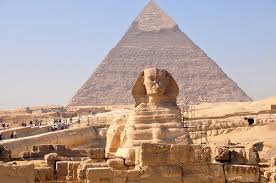
Экономика Египта является одной из крупнейших и наиболее диверсифицированных на Ближнем Востоке, и, согласно прогнозам, станет одной из крупнейших в мире в XXI веке.
5 фактов о Египте на английском
Egypt is a very dry country. The Sahara and Libyan Desert make up most of the area of Egypt.
Egypt experiences natural hazards such as droughts, earthquakes, flash floods, landslides, windstorms (called khamsin), dust storms and sandstorms.
The longest river in the world, the Nile, runs through Egypt.
Egypt is famous for its ancient civilization, the Ancient Egyptians, who date back to around 3150 B.C. Egypt is home the Great Pyramid of Giza, one of the Seven Wonders of the Ancient World.
The most popular sport in Egypt is football (soccer).
Текст The Pyramids of Egypt с переводом.
The Pyramids of Egypt
Пирамиды Египта
| Since ancient times, the pyramids at Giza in Egypt have been one of the world’s most popular tourist destinations. The largest of these, the Great Pyramid of Giza, or Khufu’s Pyramid, is the only one of the Seven Wonders of the Ancient World that still survives today. It was the tallest building in the world for almost 5.000 years – that is, until the Eiffel Tower was built in 1889. | С древних времен пирамиды в Гизе являются одной из самых популярных туристических целей. Самая большая из них – Великая пирамида Гизы, пирамида Хеопса – является единственным чудом из Семи Чудес древнего мира, которое дошло до нашего времени. Оно было самым высоким зданием мира на протяжении почти 5 тысяч лет, т.е. до того момента, пока в 1889 году была построена Эйфелева Башня. | |
| Pharaohs, the first rulers of Egypt, built pyramids to show their power to the people. The first Pharaohs built much simpler tombs called mastabas. These mastabas were square buildings with a room inside big enough for the coffin, the mummy of the pharaoh’s body and his treasures. Ancient Egyptians believed that dead people still needed their bodies and treasures, such as paintings, gold and jewels, for their life after death. | Фараоны, первые правители Египта, строили пирамиды, чтобы показать свою власть людям. Первые фараоны строили строили более простые гробницы, называемые мастабами (mastabas). Эти мастабы были квадратными зданиями с комнатой внутри, достаточно большой для гроба – мумии тела фараона и его сокровищ. Древние Египтяне верили, что мертвым нужно их тело и сокровища, такие как картины, золото и драгоценности, для жизни после смерти. | |
| Many of the pyramids were decorated inside, especially in the room where the dead pharaoh was laid. Archaeologists discovered many pictures in the tombs and mysterious writing on the walls called hieroglyphics. Invented about 5.000 years ago, hieroglyphics are the oldest form of writing. They were just simple drawings of everyday things we see and hear. The Egyptians believed that both the hieroglyphics and the tomb pictures were magical, which is why they painted them inside the pyramids. | Многие из пирамид были украшены изнутри особенно в комнате, где размещался покойный фараон. Археологи обнаружили много картин в гробницах и мистические письмена на стенах, называемые иероглифами. Изобретенные 5 тысяч лет назад иероглифы являются старейшей формой письма. Они были простыми изображениями каждодневных вещей, которые мы видим и слышим. Египтяне верили, что как иероглифы, так и картины в гробницах были магическими, поэтому они рисовали их внутри пирамид. | |
| When we look at the pyramids today, it is easy to see that they were built to last for a very long time. Have you ever wondered how these great monuments were built? Many archaeologists believe that the builders first studied the stars to decide which direction the pyramid would face, as Egyptians believed the pharaohs would join the stars after death. Then, they built a small mastaba on the ground. Next, they put dirt and stones all over it, leaving a tunnel to the outside. To raise the stones to the top of the pyramid, they probably built long ramps and then rolled the stones up them. | Когда мы смотрим на пирамиды сегодня, то легко видим, что они построены на века. Вы когда-нибудь интересовались тем, как были построены эти великие монументы? Многие археологи полагают, что строители сначала изучали звезды, чтобы решить, в какое направление будут обращены пирамиды, так как Египтяне верили, что фараоны присоединятся к звездам после смерти. Потом они строили небольшую гробницу на земле. Потом наносили на нее землю и камни, оставляя проход внутри. Чтобы поднимать камни наверх пирамиды, они, вероятно, строили большие леса, и потом по ним закатывали камни. | |
| The city of Giza is on the River Nile. The Nile was also very important in the building of the pyramids as it was used to transport the stones from far away. Granite and marble, for example, were brought from Aswan, which is over 500km away. Many ships also brought limestone, used for the outside walls of the pyramids, from the city of Tura, which was just across the river from Giza. | Город Гиза находится на реке Нил. Нил также играл важную роль в строительстве пирамид, так как он использовался для транспортировки камней издалека. Например, гранит и мрамор доставлялся из города Асуан, который находится на расстоянии 500 километров. Многие корабли также везли известняк, используемый для внешней стороны стен пирамид, из города Тура, который располагался по реке прямо напротив Гизы. | |
| Just to give you an idea of how large the Great Pyramid is – it is the height of a modern 40-storey building, or over 145 metres. It covers an area of land the size of seven city streets. Workers used 2,300,000 blocks to build it, each weighing 2.500 kilograms (2.5 tons). It took about 36,000 workers (mostly slaves and farmers) between 20 and 30 years to build it. This means that for every minute they worked, they added three blocks to the pyramid! | Чтобы дать вам понять, насколько большой является Великая Пирамида, – она высотой с 40-этажный дом, или свыше 145 метров. Она покрывает территорию размером семи городских улиц. Рабочие использовали 2300000 блоков для ее постройки, каждый весом в 2500 килограмм (2,5 тонны). Потребовалось 36000 рабочих (по большей части рабов и фермеров) и 20-30 лет для постройки. Это значит, что каждую минуту, в течение которой ни работали, они добавляли по три блока к пирамиде! | |
| In conclusion, there is still a great deal of wonder and mystery surrounding the pyramids. No one knows for certain exactly when and how they were built. So far 46 of them have been found in Egypt. However, maybe there are others lying underneath the sand just waiting to be discovered. Only time will tell! | В заключение, вокруг пирамид существует большое количество удивительного и загадочного. Никто точно не знает, когда и как они были построены. До настоящего времени в Египте было найдено 46 пирамид. Однако, может быть, под песком имеются и другие, ожидающие открытия. Время покажет! |
Источник: Spotlight, 10 класс
| На английском языке | Перевод на русский язык |
| Ancient Egypt | Древний Египет |
| Egypt is full of mysteries. This country was home to one of the most ancient civilizations in the world. Today we associate this North African country with giant pyramids, temples and tombs of pharaohs. Historians discovered that the ancient nation living around the River Nile existed more than 5,000 years ago and lasted for over 2,000 years. This mighty civilization was known to have triumph and glory. The center of life was concentrated around the Nile. First of all, people used this river as the main transportation route. Secondly, its annual floods made it possible to grow crops. Ancient Egyptians were wise people. They learned how to communicate through inscriptions on walls. They used sophisticated hieroglyphs. They could also build gigantic stone structures, which modern people couldn’t replicate. Other than that, they used the papyrus to invent the first kind of paper. Ancient Egyptians had worshipped several gods and goddesses. They built huge temples for them and believed in their sanctity. The most important of all was the god of the sun – Amun Ra. He was depicted with two plumes on his head, the ankh symbol and the mighty scepter. One of the largest spiritual temples that ancient Egyptians built is situated in Karnak. It consists of more than 130 columns that are 25 meters high. Many tourists visit this place to admire its architecture. Ancient Egyptians believed in life after death. That’s why they preserved their pharaohs in mummies. Afterwards these mummies were placed in tombs or graves together with their personal belongings. Many people wish to see three large pyramids of Giza. These constructions are among the oldest buildings in the world. | Египет полон загадок. Эта страна приютила одну из древнейших цивилизаций в мире. Сегодня мы связываем эту североафриканскую страну с гигантскими пирамидами, храмами и гробницами фараонов. Историки обнаружили, что древний народ, живший у Нила, существовал более 5000 лет назад и прожил там более 2000 лет. Известно, что этой могучей цивилизации сопутствовали триумф и слава. Центр жизни был сосредоточен вокруг Нила. Прежде всего, люди использовали эту реку в качестве основного маршрута транспортировки. Во-вторых, ежегодные полноводья сделали возможным выращивать там сельскохозяйственные культуры. Древние египтяне были мудрыми людьми. Они научились общаться через надписи на стенах. Они использовали сложные иероглифы. Они также умудрились построить гигантские каменные сооружения, которые современным людям не дано воспроизвести. Кроме того, они использовали папирус, чтобы изобрести первый вид бумаги. Древние египтяне поклонялись нескольким богам и богиням. Они возводили огромные храмы для них и верили в их святость. Наиболее важным из всех был бог солнца – Амон Ра. Он был изображен с двумя перьями на голове, символом жизни анх и скипетром могущества. Один из крупнейших духовных храмов, построенный древними египтянами, находится в Карнаке. Он состоит из 130 и более столбцов высотой в 25 метров. Многие туристы посещают это место, чтобы полюбоваться его архитектурой. Древние египтяне верили в жизнь после смерти. Вот почему они мумифицировали своих фараонов. Впоследствии эти мумии помещались в гробницы или могилы вместе со своими личными принадлежностями. Многие люди хотели бы увидеть три больших пирамиды в Гизе. Эти сооружения относятся к одним из старейших построек в мире. |
Древний Египет/ Ancient Egypt
Egypt is a country in North Africa, on the Mediterranean Sea, and is home to one of the oldest civilizations on earth. The name ‘Egypt’ comes from the Greek Aegyptos which was the Greek pronunciation of the ancient Egyptian name ‘Hwt-Ka-Ptah’ («Mansion of the Spirit of Ptah»), originally the name of the city of Memphis.
Memphis was the first capital of Egypt and a famous religious and trade center; its high status is attested to by the Greeks alluding to the entire country by that name. To the ancient Egyptians themselves, their country was simply known as Kemet, which means ‘Black Land’, so named for the rich, dark soil along the Nile River where the first settlements began. Later, the country was known as Misr which means ‘country’, a name still in use by Egyptians for their nation in the present day. Egypt thrived for thousands of years (from c. 8000 BCE to c. 30 BCE) as an independent nation whose culture was famous for great cultural advances in every area of human knowledge, from the arts to science to technology and religion. The great monuments which ancient Egypt is still celebrated for reflect the depth and grandeur of Egyptian culture which influenced so many ancient civilizations, among them Greece and Rome.
One of the reasons for the enduring popularity of Egyptian culture is its emphasis on the grandeur of the human experience. Their great monuments, tombs, temples, and artwork all celebrate life and stand as reminders of what once was and what human beings, at their best, are capable of achieving. Although ancient Egypt in popular culture is often associated with death and mortuary rites, something even in these speaks to people across the ages of what it means to be a human being and the power and purpose of remembrance.
The written history of Egypt begins between 3400 and 3200 BCE when hieroglyphic script is developed by the Naqada Culture III.
To the Egyptians, life on earth was only one aspect of an eternal journey. The soul was immortal and was only inhabiting a body on this physical plane for a short time. At death, one would meet with judgment in the Hall of Truth and, if justified, would move on to an eternal paradise known as The Field of Reeds which was a mirror image of one’s life on earth. Once one had reached paradise one could live peacefully in the company of those one had loved while on earth, including one’s pets, in the same neighborhood by the same stream, beneath the very same trees one thought had been lost at death. This eternal life, however, was only available to those who had lived well and in accordance with the will of the gods in the most perfect place conducive to such a goal: the land of Egypt.
YouTube
Follow us on Youtube!
Egypt has a long history which goes back far beyond the written word, the stories of the gods, or the monuments which have made the culture famous. Evidence of overgrazing of cattle, on the land which is now the Sahara Desert, has been dated to about 8000 BCE. This evidence, along with artifacts discovered, points to a thriving agricultural civilization in the region at that time. As the land was mostly arid even then, hunter-gatherer nomads sought the cool of the water source of the Nile River Valley and began to settle there sometime prior to 6000 BCE.
Naqada II pottery Guillaume Blanchard (CC BY-SA)
Organized farming began in the region c. 6000 BCE and communities known as the Badarian Culture began to flourish alongside the river. Industry developed at about this same time as evidenced by faience workshops discovered at Abydos dating to c. 5500 BCE. The Badarian were followed by the Amratian, the Gerzean, and the Naqada cultures (also known as Naqada I, Naqada II, and Naqada III), all of which contributed significantly to the development of what became Egyptian civilization. The written history of the land begins at some point between 3400 and 3200 BCE when hieroglyphic script is developed by the Naqada Culture III. By 3500 BCE mummification of the dead was in practice at the city of Hierakonpolis and large stone tombs built at Abydos. The city of Xois is recorded as being already ancient by 3100-2181 BCE as inscribed on the famous Palermo Stone. As in other cultures worldwide, the small agrarian communities became centralized and grew into larger urban centers.
Love History?
Sign up for our free weekly email newsletter!
Early History of Egypt
The Early Dynastic Period in Egypt (c. 3150 — c. 2613 BCE) saw the unification of the north and south kingdoms under the king Menes (also known as Meni or Manes) of Upper Egypt who conquered Lower Egypt in c. 3118 BCE or c. 3150 BCE. This version of the early history comes from the Aegyptica (History of Egypt) by the ancient historian Manetho who lived in the 3rd century BCE under the Ptolemaic Dynasty (323-30 BCE). Although his chronology has been disputed by later historians, it is still regularly consulted on dynastic succession and the early history of ancient Egypt.
Narmer Palette [Two Sides] Unknown Artist (Public Domain)
Manetho’s work is the only source which cites Menes and the conquest, and it is now thought that the man referred to by Manetho as ‘Menes’ was the king Narmer who peacefully united Upper and Lower Egypt under one rule. Identification of Menes with Narmer is far from universally accepted, however, and Menes has been as credibly linked to the king Hor-Aha (c. 3100-3050 BCE) who succeeded him. An explanation for Menes’ association with his predecessor and successor is that ‘Menes’ is an honorific title meaning «he who endures» and not a personal name and so could have been used to refer to more than one king. The claim that the land was unified by military campaign is also disputed as the famous Narmer Palette, depicting a military victory, is considered by some scholars to be royal propaganda. The country may have first been united peacefully, but this seems unlikely.
Geographical designation in ancient Egypt follows the direction of the Nile River and so Upper Egypt is the southern region and Lower Egypt the northern area closer to the Mediterranean Sea. Narmer ruled from the city of Heirakonopolis and then from Memphis and Abydos. Trade increased significantly under the rulers of the Early Dynastic Period in Egypt and elaborate mastaba tombs, precursors to the later pyramids, developed in Egyptian burial practices which included increasingly elaborate mummification techniques.
The Gods
From the Predynastic Period in Egypt (c. 6000 — c. 3150 BCE) a belief in the gods defined the Egyptian culture. An early Egyptian creation myth tells of the god Atum who stood in the midst of swirling chaos before the beginning of time and spoke creation into existence. Atum was accompanied by the eternal force of heka (magic), personified in the god Heka and by other spiritual forces which would animate the world. Heka was the primal force which infused the universe and caused all things to operate as they did; it also allowed for the central value of the Egyptian culture: ma’at, harmony and balance.
All of the gods and all of their responsibilities went back to ma’at and heka. The sun rose and set as it did and the moon traveled its course across the sky and the seasons came and went in accordance with balance and order which was possible because of these two agencies. Ma’at was also personified as a deity, the goddess of the ostrich feather, to whom every king promised his full abilities and devotion. The king was associated with the god Horus in life and Osiris in death based upon a myth which became the most popular in Egyptian history.
Egyptian God Osiris Ali Kalamchi (Copyright)
Osiris and his sister-wife Isis were the original monarchs who governed the world and gave the people the gifts of civilization. Osiris’ brother, Set, grew jealous of him and murdered him but he was brought back to life by Isis who then bore his son Horus. Osiris was incomplete, however, and so descended to rule the underworld while Horus, once he had matured, avenged his father and defeated Set. This myth illustrated how order triumphed over chaos and would become a persistent motif in Egyptian religion, mortuary rituals, and religious texts, and art. There was no period in which the gods did not play an integral role in the daily lives of the Egyptians and this is clearly seen from the earliest times in the country’s history.
The Old Kingdom
During the period known as the Old Kingdom of Egypt (c. 2613-2181 BCE), architecture honoring the gods developed at an increased rate and some of the most famous monuments in Egypt, such as the pyramids and the Great Sphinx of Giza, were constructed. The king Djoser, who reigned c. 2670 BCE, built the first Step Pyramid at Saqqara c. 2670, designed by his chief architect and physician Imhotep (c. 2667-2600 BCE) who also wrote one of the first medical texts describing the treatment of over 200 different diseases and arguing that the cause of disease could be natural, not the will of the gods. The Great Pyramid of Khufu (last of the Seven Wonders of the ancient world) was constructed during his reign (2589-2566 BCE) with the pyramids of Khafre (2558-2532 BCE) and Menkaure (2532-2503 BCE) following.
The Pyramids, Giza, Egypt Shellapic76 (CC BY)
The grandeur of the pyramids on the Giza plateau, as they originally would have appeared, sheathed in gleaming white limestone, is a testament to the power and wealth of the rulers during this period. Many theories abound regarding how these monuments and tombs were constructed, but modern architects and scholars are far from agreement on any single one. Considering the technology of the day, some have argued, a monument such as the Great Pyramid of Giza should not exist. Others claim, however, that the existence of such buildings and tombs suggest superior technology which has been lost to time.
There is absolutely no evidence that the monuments of the Giza plateau — or any others in Egypt — were built by slave labor nor is there any evidence to support a historical reading of the biblical Book of Exodus. Most reputable scholars today reject the claim that the pyramids and other monuments were built by slave labor, although slaves of different nationalities certainly did exist in Egypt and were employed regularly in the mines. Egyptian monuments were considered public works created for the state and used both skilled and unskilled Egyptian workers in construction, all of whom were paid for their labor. Workers at the Giza site, which was only one of many, were given a ration of beer three times a day and their housing, tools, and even their level of health care have all been clearly established.
The First Intermediate Period & the Hyksos
The era known as the First Intermediate Period of Egypt (2181-2040 BCE) saw a decline in the power of the central government following its collapse. Largely independent districts with their own governors developed throughout Egypt until two great centers emerged: Hierakonpolis in Lower Egypt and Thebes in Upper Egypt. These centers founded their own dynasties which ruled their regions independently and intermittently fought with each other for supreme control until c. 2040 BCE when the Theban king Mentuhotep II (c. 2061-2010 BCE) defeated the forces of Hierakonpolis and united Egypt under the rule of Thebes.
The Middle Kingdom of Egypt is considered its ‘Classical Age’ when art & culture reached great heights & Thebes became the most important & wealthiest city.
The stability provided by Theban rule allowed for the flourishing of what is known as the Middle Kingdom (2040-1782 BCE). The Middle Kingdom is considered Egypt’s ‘Classical Age’ when art and culture reached great heights and Thebes became the most important and wealthiest city in the country. According to the historians Oakes and Gahlin, «the Twelfth Dynasty kings were strong rulers who established control not only over the whole of Egypt but also over Nubia to the south, where several fortresses were built to protect Egyptian trading interests» (11). The first standing army was created during the Middle Kingdom by the king Amenemhat I (c. 1991-1962 BCE) the temple of Karnak was begun under Senruset I (c. 1971-1926 BCE), and some of the greatest and Egyptian literature and art was produced. The 13th Dynasty, however, was weaker than the 12th and distracted by internal problems which allowed for a foreign people known as the Hyksos to gain power in Lower Egypt around the Nile Delta.
The Hyksos are a mysterious people, most likely from the area of Syria/Palestine, who first appeared in Egypt c. 1800 and settled in the town of Avaris. While the names of the Hyksos kings are Semitic in origin, no definite ethnicity has been established for them. The Hyksos grew in power until they were able to take control of a significant portion of Lower Egypt by c. 1720 BCE, rendering the Theban Dynasty of Upper Egypt almost a vassal state.
Map of Ancient Egypt Tina Ross (Copyright)
This era is known as The Second Intermediate Period of Egypt (c. 1782 — c. 1570 BCE). While the Hyksos (whose name simply means ‘foreign rulers’) were hated by the Egyptians, they introduced a great many improvements to the culture such as the composite bow, the horse, and the chariot along with crop rotation and developments in bronze and ceramic works. At the same time the Hyksos controlled the ports of Lower Egypt, by 1700 BCE the Kingdom of Kush had risen to the south of Thebes in Nubia and now held that border. The Egyptians mounted a number of campaigns to drive the Hyksos out and subdue the Nubians, but all failed until prince Ahmose I of Thebes (c. 1570-1544 BCE) succeeded and unified the country under Theban rule.
The New Kingdom & the Amarna Period
Ahmose I initiated what is known as the period of the New Kingdom of Egypt (c. 1570 — c. 1069 BCE) which again saw great prosperity in the land under a strong central government. The title of pharaoh for the ruler of Egypt comes from the period of the New Kingdom; earlier monarchs were simply known as kings. Many of the Egyptian sovereigns best known today ruled during this period and the majority of the great structures of Egyptian architecture such as the Ramesseum, Abu Simbel, the temples of Karnak and Luxor, and the tombs of the Valley of the Kings and Valley of the Queens were either created or greatly enhanced during this time.
Between 1504-1492 BCE the pharaoh Thutmose I (Tuthmosis I) consolidated his power and expanded the boundaries of Egypt to the Euphrates River in the north, Syria and Palestine to the west, and Nubia to the south. His reign was followed by Queen Hatshepsut (1479-1458 BCE) who greatly expanded trade with other nations, most notably the Land of Punt. Her 22-year reign was one of peace and prosperity for Egypt.
Portrait of Queen Hatshepsut Rob Koopman (CC BY-SA)
Her successor, Thutmose III (Tuthmosis III), carried on her policies (although he tried to eradicate all memory of her as, it is thought, he did not want her to serve as a role model for other women since only males were considered worthy to rule) and, by the time of his death in 1425 BCE, Egypt was a great and powerful nation. The prosperity led to, among other things, an increase in the brewing of beer in many different varieties and more leisure time for sports. Advances in medicine led to improvements in health.
Bathing had long been an important part of the daily Egyptian’s regimen as it was encouraged by their religion and modeled by their clergy. At this time, however, more elaborate baths were produced, presumably more for leisure than simply hygiene. The Kahun Gynecological Papyrus, concerning women’s health and contraceptives, had been written c. 1800 BCE and, during this period, seems to have been made extensive use of by doctors. Surgery and dentistry were both practiced widely and with great skill, and beer was prescribed by physicians for ease of symptoms of over 200 different maladies.
Kahun Gynaecological Papyrus Francis Llewellyn Griffith (Public Domain)
In 1353 BCE the pharaoh Amenhotep IV succeeded to the throne and, shortly after, changed his name to Akhenaten (`living spirit of Aten’) to reflect his belief in a single god, Aten. The Egyptians, as noted above, traditionally believed in many gods whose importance influenced every aspect of their daily lives. Among the most popular of these deities were Amun, Osiris, Isis, and Hathor. The cult of Amun, at this time, had grown so wealthy that the priests were almost as powerful as the pharaoh. Akhenaten and his queen, Nefertiti, renounced the traditional religious beliefs and customs of Egypt and instituted a new religion based upon the recognition of one god.
Akhenaten was the first ruler to decree statuary & a temple in honor of his queen instead of only for himself or the gods.
His religious reforms effectively cut the power of the priests of Amun and placed it in his hands. He moved the capital from Thebes to Amarna to further distance his rule from that of his predecessors. This is known as The Amarna Period (1353-1336 BCE) during which Amarna grew as the capital of the country and polytheistic religious customs were banned.
Among his many accomplishments, Akhenaten was the first ruler to decree statuary and a temple in honor of his queen instead of only for himself or the gods and used the money which once went to the temples for public works and parks. The power of the clergy declined sharply as that of the central government grew, which seemed to be Akhenaten’s goal, but he failed to use his power for the best interest of his people. The Amarna Letters make clear that he was more concerned with his religious reforms than with foreign policy or the needs of the people of Egypt.
His reign was followed by his son, the most recognizable Egyptian ruler in the modern day, Tutankhamun, who reigned from c. 1336 — c. 1327 BCE. He was originally named Tutankhaten to reflect the religious beliefs of his father but, upon assuming the throne, changed his name to Tutankhamun to honor the ancient god Amun. He restored the ancient temples, removed all references to his father’s single deity, and returned the capital to Thebes. His reign was cut short by his death and, today, he is most famous for the intact grandeur of his tomb, discovered in 1922 CE, which became an international sensation at the time.
Death Mask of Tutankhamun Richard IJzermans (CC BY-NC-SA)
The greatest ruler of the New Kingdom, however, was Ramesses II (also known as Ramesses the Great, 1279-1213 BCE) who commenced the most elaborate building projects of any Egyptian ruler and who reigned so efficiently that he had the means to do so. Although the famous Battle of Kadesh of 1274 BCE (between Ramesses II of Egypt and Muwatalli II of the Hittites) is today regarded as a draw, Ramesses considered it a great Egyptian victory and celebrated himself as a champion of the people, and finally as a god, in his many public works.
His temple of Abu Simbel (built for his queen Nefertari) depicts the battle of Kadesh and the smaller temple at the site, following Akhenaten’s example, is dedicated to Ramesses’ favorite queen Nefertari. Under the reign of Ramesses II, the first peace treaty in the world (The Treaty of Kadesh) was signed in 1258 BCE and Egypt enjoyed almost unprecedented affluence as evidenced by the number of monuments built or restored during his reign.
Ramesses II’s fourth son, Khaemweset (c. 1281 — c. 1225 BCE), is known as the «First Egyptologist» for his efforts in preserving and recording old monuments, temples, and their original owner’s names. It is largely due to Khaemweset’s initiative that Ramesses II’s name is so prominent at so many ancient sites in Egypt. Khaemweset left a record of his own efforts, the original builder/owner of the monument or temple, and his father’s name as well.
Abu Simbel Panorama Dennis Jarvis (CC BY-SA)
Ramesses II became known to later generations as ‘The Great Ancestor’ and reigned for so long that he outlived most of his children and his wives. In time, all of his subjects had been born knowing only Ramesses II as their ruler and had no memory of another. He enjoyed an exceptionally long life of 96 years, over double the average lifespan of an ancient Egyptian. Upon his death, it is recorded that many feared the end of the world had come as they had known no other pharaoh and no other kind of Egypt.
The Decline of Egypt & the Coming of Alexander the Great
One of his successors, Ramesses III (1186-1155 BCE), followed his policies but, by this time, Egypt’s great wealth had attracted the attention of the Sea Peoples who began to make regular incursions along the coast. The Sea Peoples, like the Hyksos, are of unknown origin but are thought to have come from the southern Aegean area. Between 1276-1178 BCE the Sea Peoples were a threat to Egyptian security. Ramesses II had defeated them in a naval battle early in his reign as had his successor Merenptah (1213-1203 BCE). After Merenptah’s death, however, they increased their efforts, sacking Kadesh, which was then under Egyptian control, and ravaging the coast. Between 1180-1178 BCE Ramesses III fought them off, finally defeating them at the Battle of Xois in 1178 BCE.
Following the reign of Ramesses III, his successors attempted to maintain his policies but increasingly met with resistance from the people of Egypt, those in the conquered territories, and, especially, the priestly class. In the years after Tutankhamun had restored the old religion of Amun, and especially during the great time of prosperity under Ramesses II, the priests of Amun had acquired large tracts of land and amassed great wealth which now threatened the central government and disrupted the unity of Egypt. By the time of Ramesses XI (1107-1077 BCE), the end of the 20th Dynasty, the Egyptian government had become so weakened by the power and corruption of the clergy that the country again fractured and central administration collapsed, initiating the so-called Third Intermediate Period of Egypt c. 1069-525 BCE.
Map of the Third Intermediate Period Jeff Dahl (CC BY-SA)
Under the Kushite King Piye (752-722 BCE), Egypt was again unified and the culture flourished, but beginning in 671 BCE, the Assyrians under Esarhaddon began their invasion of Egypt, conquering it by 666 BCE under his successor Ashurbanipal. Having made no long-term plans for control of the country, the Assyrians left it in ruin in the hands of local rulers and abandoned Egypt to its fate. Egypt rebuilt and refortified, however, and this is the state the country was in when Cambyses II of Persia struck at the Battle of Pelusium in 525 BCE. Knowing the reverence the Egyptians held for cats (who were thought living representations of the popular goddess Bastet), Cambyses II ordered his men to paint cats on their shields and to drive cats, and other animals sacred to the Egyptians, in front of the army toward Pelusium. The Egyptian forces surrendered and the country fell to the Persians. It would remain under Persian occupation until the coming of Alexander the Great in 332 BCE.
Alexander was welcomed as a liberator and conquered Egypt without a fight. He established the city of Alexandria and moved on to conquer Phoenicia and the rest of the Persian Empire. After his death in 323 BCE his general, Ptolemy I Soter, brought his body back to Alexandria and founded the Ptolemaic Dynasty (323-30 BCE). The last of the Ptolemies was Cleopatra VII who committed suicide in 30 BCE after the defeat of her forces (and those of her consort Mark Antony) by the Romans under Octavian Caesar at the Battle of Actium (31 BCE). Egypt then became a province of the Roman Empire (30 BCE-476 CE) then of the Byzantine Empire (c. 527-646 CE) until it was conquered by the Arab Muslims under Caliph Umar in 646 CE and fell under Islamic rule.
Artist’s Depiction of an Excavation in Egypt Mohawk Games (Copyright)
The effect or remembrance of what Egypt accomplished at the very dawn of history has influence in every nation and every age. ‘It is even possible’, as Faure has said, ‘that Egypt, through the solidarity, the unity, and the disciplined variety of its artistic products, through the enormous duration and the sustained power of its effort, offers the spectacle of the greatest civilization that has yet appeared on the earth.’ We shall do well to equal it. (217)
Egyptian Culture and history has long held a universal fascination for people; whether through the work of early archeologists in the 19th century CE (such as Champollion who deciphered the Rosetta Stone in 1822 CE) or the famous discovery of the Tomb of Tutankhamun by Howard Carter in 1922 CE. The ancient Egyptian belief in life as an eternal journey, created and maintained by divine magic, inspired later cultures and later religious beliefs. Much of the iconography and the beliefs of Egyptian religion found their way into the new religion of Christianity and many of their symbols are recognizable today with largely the same meaning. It is an important testimony to the power of the Egyptian civilization that so many works of the imagination, from films to books to paintings even to religious belief, have been and continue to be inspired by its elevating and profound vision of the universe and humanity’s place in it.
This article has been reviewed for accuracy, reliability and adherence to academic standards prior to publication.

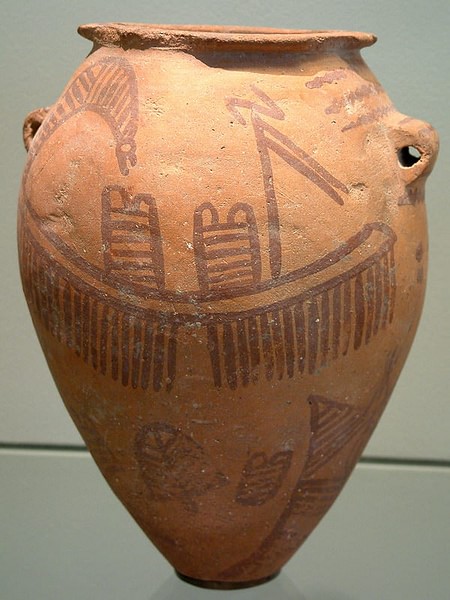
![Narmer Palette [Two Sides]](https://www.worldhistory.org/img/r/p/500x600/4412.jpg?v=1670437264)
